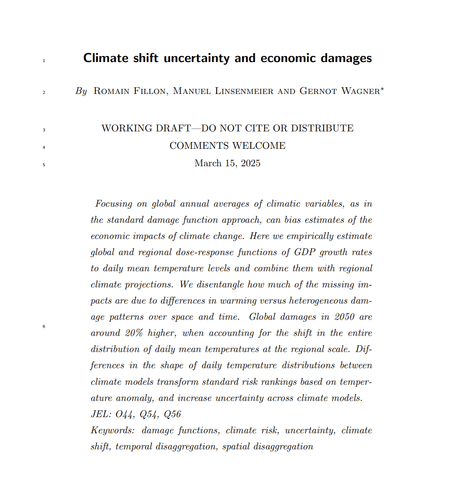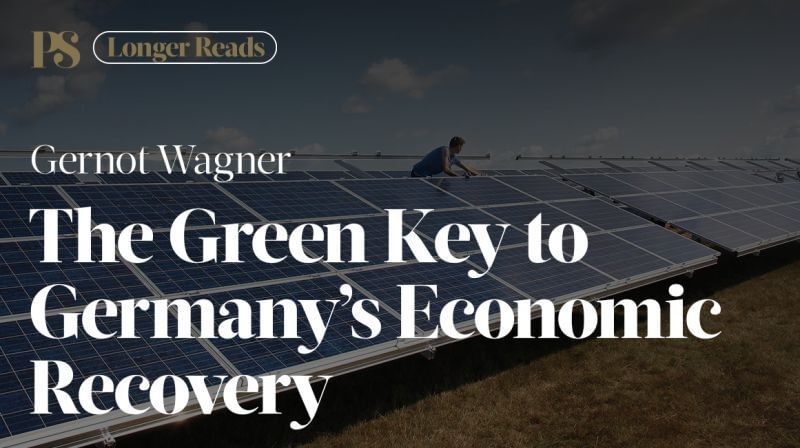Was Hurricane Sandy the ‘Fat Tail’ of Climate Change?
by Gernot Wagner and Martin L. Weitzman
Call them “black swans,” “unknown unknowns,” “fat tails,” or “10-foot women.” Whatever you call them, they’re bizarre events. They shouldn’t happen. Usually they don’t happen, but every once in a while they do happen, and then their impact makes daily events mere noise.
This week, one did happen. Sandy and its aftermath have all the characteristics that make fat tails such unique and frightening events.
We thought we had seen it all. New York had been hit by storms before. Hurricane Irene last year shut down roads and public transit, cancelled flights, and caused havoc in surrounding communities, but New York City emerged largely unscathed. As a result, many Gothamites weren’t unduly worried when public officials warned of dramatic impacts ahead of this week’s storm.
Basic human psychology prompts us to ignore outliers, even if they dwarf all else. Averages are easy to grasp. Guess the height of the next woman walking into a room, and you could do a lot worse than to pick “between 5 feet and 5 feet 8 inches.” Ninety out of one hundred American women in their twenties will be in that range.
Outliers are in a league of their own. New York Fashion Week runways notwithstanding, 6-foot women are statistical oddities. Zeng Jinlian holds the world record as the tallest woman, growing to 8 feet and 1.75 inches before dying at the age of seventeen. No one has ever grown to 10 feet or likely will.
Yet in other parts of life, we do see metaphorical 10-foot women. Sandy wasn’t just above average; its power and extent were orders of magnitude greater than the typical storm hitting New York. It also dwarfed Irene, the second-largest storm in recent memory. Humans are bound to brush aside such possibilities.
Science itself has a hard time grappling with fat tails. The scientific process largely works through repetition, which by definition does not apply here. Still, science can help us model fat tails that reach far beyond human imagination. Statisticians and economists have discovered patterns confirming the existence of fat tails in everything from stock market returns to extreme weather events. A 1-in-100-year event is indeed rare, by definition. But it may well dwarf all else in impact. And by now we know that 1-in-100-year storms — the hallmark often used for infrastructure — may be showing up much more frequently.
It seems that climate change may have made things worse. For one, sea levels off the mid-Atlantic coast are already a foot higher now than they were a century ago, according to the National Oceanic and Atmospheric Administration. One foot isn’t much compared to a 14-foot storm surge, but it may well have pushed some flooding over the top. Similarly, the hurricane could reach New York in the first place due to unusually warm sea surface temperatures off the mid-Atlantic coast.
Global warming is not to blame for all of the 5 degrees Fahrenheit above average, but it accounts for around 1 degree. Lastly, scientific opinions differ on how much Arctic weather patterns and the loss of Arctic ice has contributed to the overall effect. This is the most tenuous link and one that requires the most further study. Scientists can neither confirm nor rule out a connection to hurricanes wandering ever further north.
Little of that figures into our daily lives – other than in such exceptional situations that, by definition, we can only observe once. All that makes climate change such a vexing problem. Its consequences are more uncertain, more global, and more long-term than most other public policy issues. Sandy may have given us a preview, but the links are hard to prove conclusively and harder to explain and act on.
Human psychology once again hurts rather than helps. We are hard-wired to ignore the root causes precisely because of the perceived remoteness of the consequences – both in space and time. The lessons of Hurricane Katrina seem to be all but forgotten.
One element, though, does remain clear: Human ingenuity is uniquely positioned to help us cope with and prepare for future disasters, if not avoid some of them altogether – assuming we do learn from science and begin addressing the underlying causes, climate change chief among them. Southern Manhattan and other parts of New York City and the region may be devastated, but New York – buried power lines, resilient infrastructure, and history of coping with disaster through joint action dealing with shared threats – is much better prepared than New Orleans was after Katrina or even areas surrounding Manhattan.
New York will come back. It always does. We may even see its triumphant return at this Sunday’s 44th running of the New York City Marathon, with the winners making their entrance into Central Park in front of a global television audience witnessing the resilience and resolve of New York first responders, volunteers and cleanup crews.
But we cannot have these images mar the dire reality: We have been loading the climate dice for too long not to have the next fat tail come sooner and stronger than we can imagine. It’s in their nature.
Gernot Wagner, the author of But Will the Planet Notice? How Smart Economics Can Save the World is an economist at the Environmental Defense Fund. Martin L. Weitzman is professor of economics at Harvard University and the author of numerous articles in environmental economics.
Published in the Wall Street Journal Ideas Market on November 1, 2012.


